The Berghaus Air Double Self-Inflating Mat boasts an R-value of 6.9, meaning it's more than capable of keeping you insulated from the cold even in the depths of winter. The fact that it mostly self-inflates, saving you plenty of effort, is just another bonus. Let’s get under its polyester skin and find out what this premium pad's all about.
Those versed in German will know Berghaus means mountain house, which is sort of what camping tents represent to those of us with a certain inclination. However, despite the German name, Berghaus hails from north-east England. Like Montane, Jöttnar and Páramo, it’s a brand that’s gone all in on a more exotic sounding name than the more prosaic English names out there. Mountain Equipment seem to do just fine too, though.
The Berghaus logo is a familiar sight on both the trails and in our cities. It creates everything from high-end mountaineering gear with the Extrem range, to mid-range outdoor apparel and footwear. Its camping kit, which includes sleeping mats and larger camping mattresses, has garnered a reputation for good quality over the years and it can be found in many of the major retailers.
Pros
- Innovative inflation and deflation valve
- Self-inflating, to a point
- Insulating enough for winter adventures
- Firm, supportive and comfortable
- Soft sleeping surface
- Packs away easily
Cons
- Not as flat feeling as some
- Finishing inflation by mouth takes some effort
| RRP: | £300 |
| Dimensions: | 200 x 132cm |
| Thickness: | 10cm |
| Packed size: | 68 x 38 x 35cm |
| Weight: | 4.59kg/10lb 1.9oz |
| R-value: | 6.9 |
Its range of sleeping mats comprises a few backpacking options and a few larger camping mattresses for car camping and the like. Don’t mistake its air mattresses for airbeds, these are self-inflating mats that boast a foam interior that provides a more comfortable sleeping platform than traditional airbeds.
The Berghaus Air Double Self-Inflating Mat is its large, rectangular and 10cm thick offering for camping couples. The mat’s RRP is £300, but it can usually be obtained new for considerably less than this, making it a decent value option for those looking for a durable sleeping platform for camping getaways.
Read on to find out my verdict, but if you’re looking for more options, our guide to the best sleeping mats covers a range of choices for backpacking and camping. Similarly, those seeking extra comfort for car camping might want to check out our roundup of the best camping mattresses.
Comfort
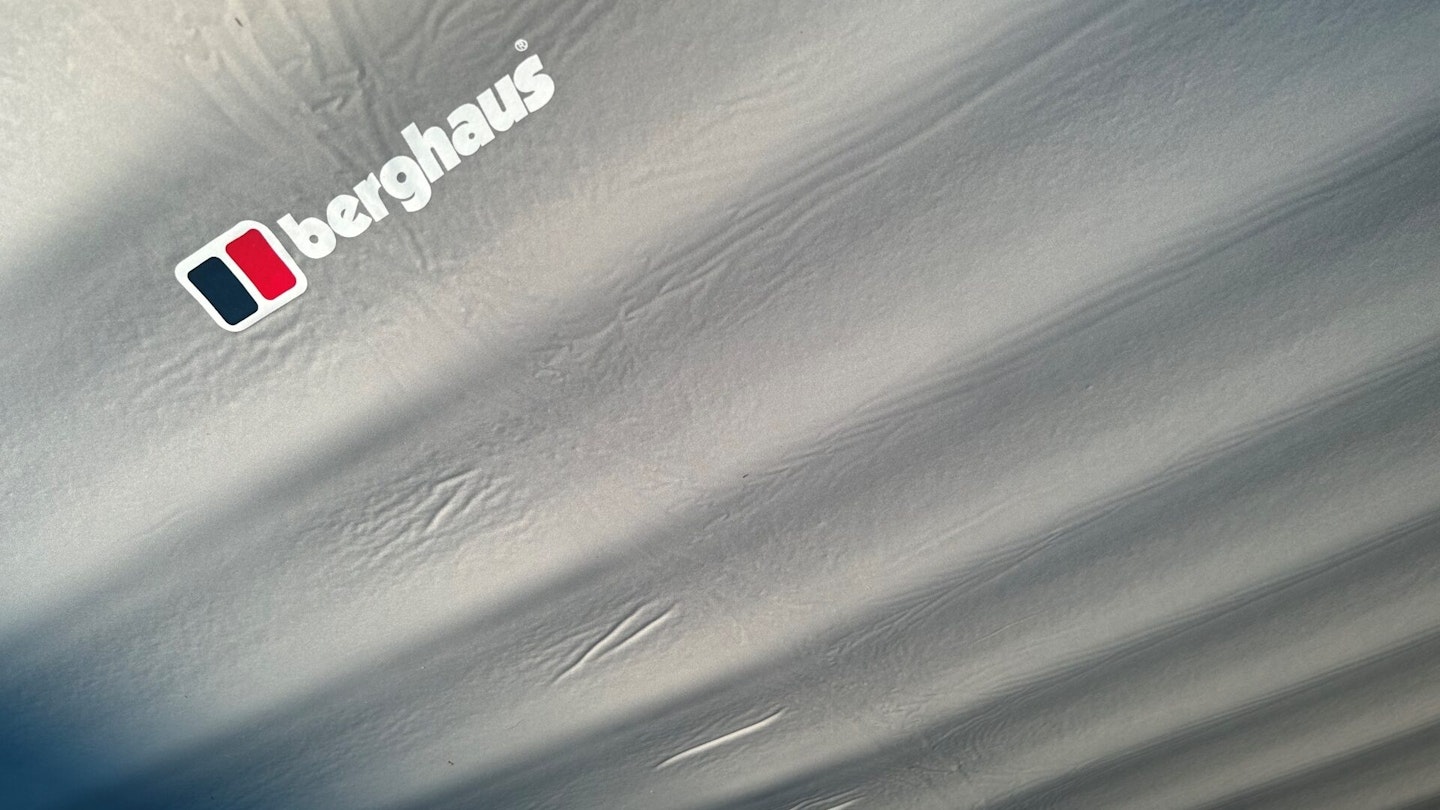
If you’re used to slumming it on a lightweight backpacking pad, you’ll find the 10cm of foam and air offered by the Berghaus Air Double positively luxurious. Of course, it’s no match for the mattress on your bed at home, but this is definitely one of the more comfortable sleeping surfaces that I’ve dozed off on while camping.
A real benefit of this kind of self-inflating mat is that it feels firmer, flatter and more supportive than something like a traditional airbed. You can roll over and not notice the movement of air beneath you, unlike with many flock airbeds, where it can feel like you’re sleeping on a bubble that wobbles with your every move.
It’s also wonderfully quiet, with none of the squeaking or plasticky sounds associated with tossing and turning on an airbed.
Look at the Air Double mattress from above and its horizontal ridges are obvious. If you were to stick it sideways on your wall, your guests might mistake it for a radiator, such is its appearance.
These foam ridges mean that it doesn’t feel quite as flat as some of the competition. You’ll definitely feel them beneath you, which takes a little bit of getting used to, though they’re more subtle than their appearance suggests.
I prefer lying across these kinds of horizontal ridges, parallel to the body, compared to the vertical ridges featured on some mats. I often feel as if I’m slumping into the valleys between the ridges, to use a broadly mountainous analogy, when said ridges are aligned vertically.
Materials, shape and size
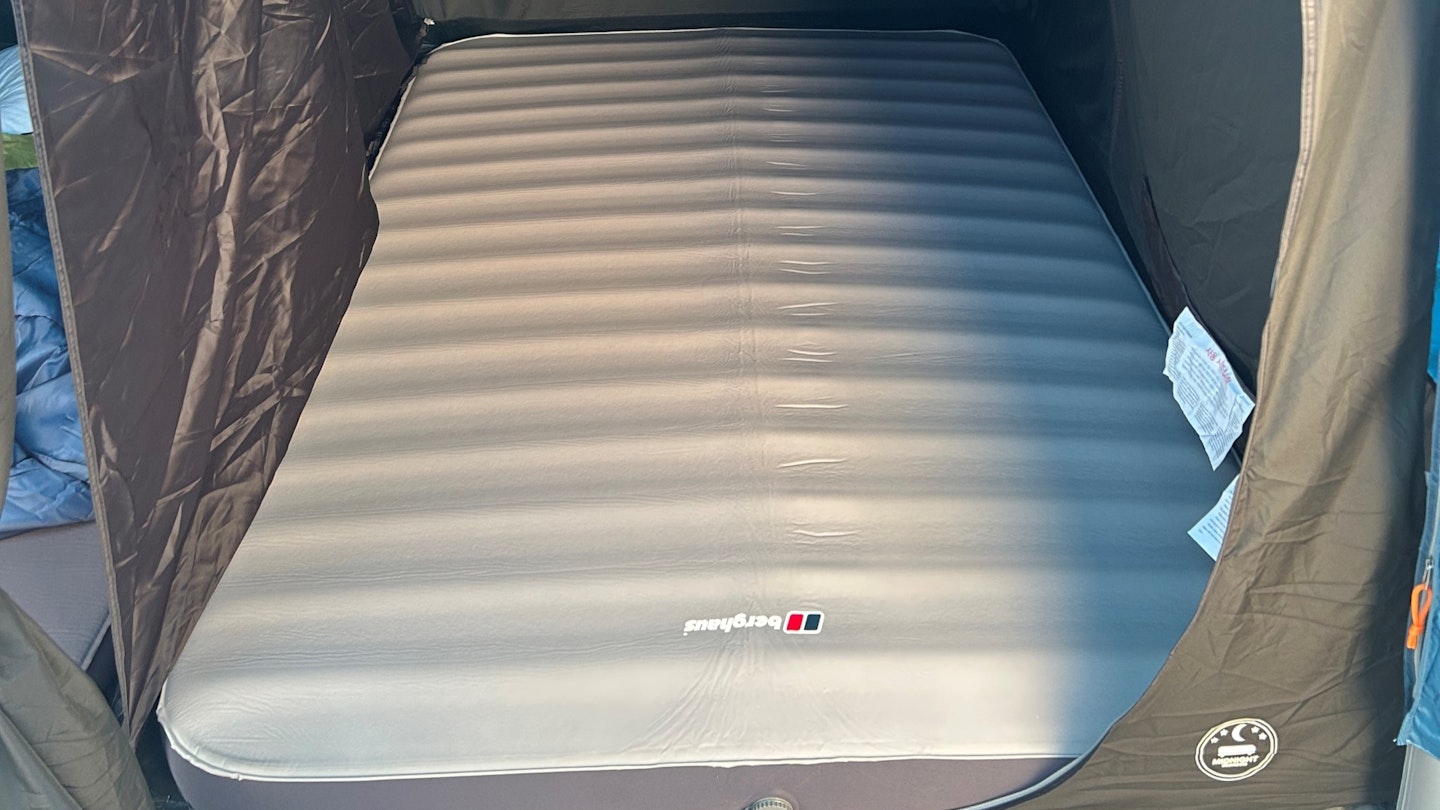
Like a blubbing Phil Mitchell in one of those Eastenders end credits scenes, the Air Double mattress is both hard and soft in the same breath. Durable, 30-denier polyester is used to provide its hardwearing qualities, while its also soft to the touch, making for a pleasant surface on which to sleep.
TPU lamination, a process that sees thermoplastic polyurethane bonded to the main polyester, is also used to enhance its robustness. This kind of coating improves water resistance, durability and maintains the stretchy quality of the underlying polyester. If TPU laiminated polyester is the bread, the meat in this sandwich is the foam core, which expands and acts like a pump when air is permitted entry.
The Berghaus Air Double is a standard rectangular shape with curved corners. At 200 x 123cm, it’ll fill the inner of a two-person tent or occupy the entire footprint of a two-person blackout pod in a family tent. In short, it’s double bed sized and perfect for two campers.
Inflation and deflation

As mentioned, the Air Double mattress is a self-inflating pad, which means that its interior foam expands, drawing air in from outside when its valve is appropriately opened. These sorts of mattresses have been around for longer than you might think. American brand Therm-a-Rest invented the first self-inflating mattress in 1972. Yet somehow, over half a century later, the technology still seems miraculous.
Like the Coleman Supercomfort Self-Inflating Sleeping Mat, the Berghaus Air Double makes use of a cyclone valve in order to facilitate the self-inflating magic. The valve comprises a screw cap that reveals a circular toggle when removed.
The toggle has two contrasting sides – inflate and deflate – with a directional layer of material that either lets air in or out depending on which way it’s facing. By turning the toggle to the inflate setting, self-inflation, or manual inflation for that matter, can begin.
Don’t expect it to spring to life in an instant. However, after 20 minutes or so the Air Double will resemble something akin to an inflated sleeping platform. You’ll want to finish the job off by blowing into it manually by mouth to achieve the desired firmness.
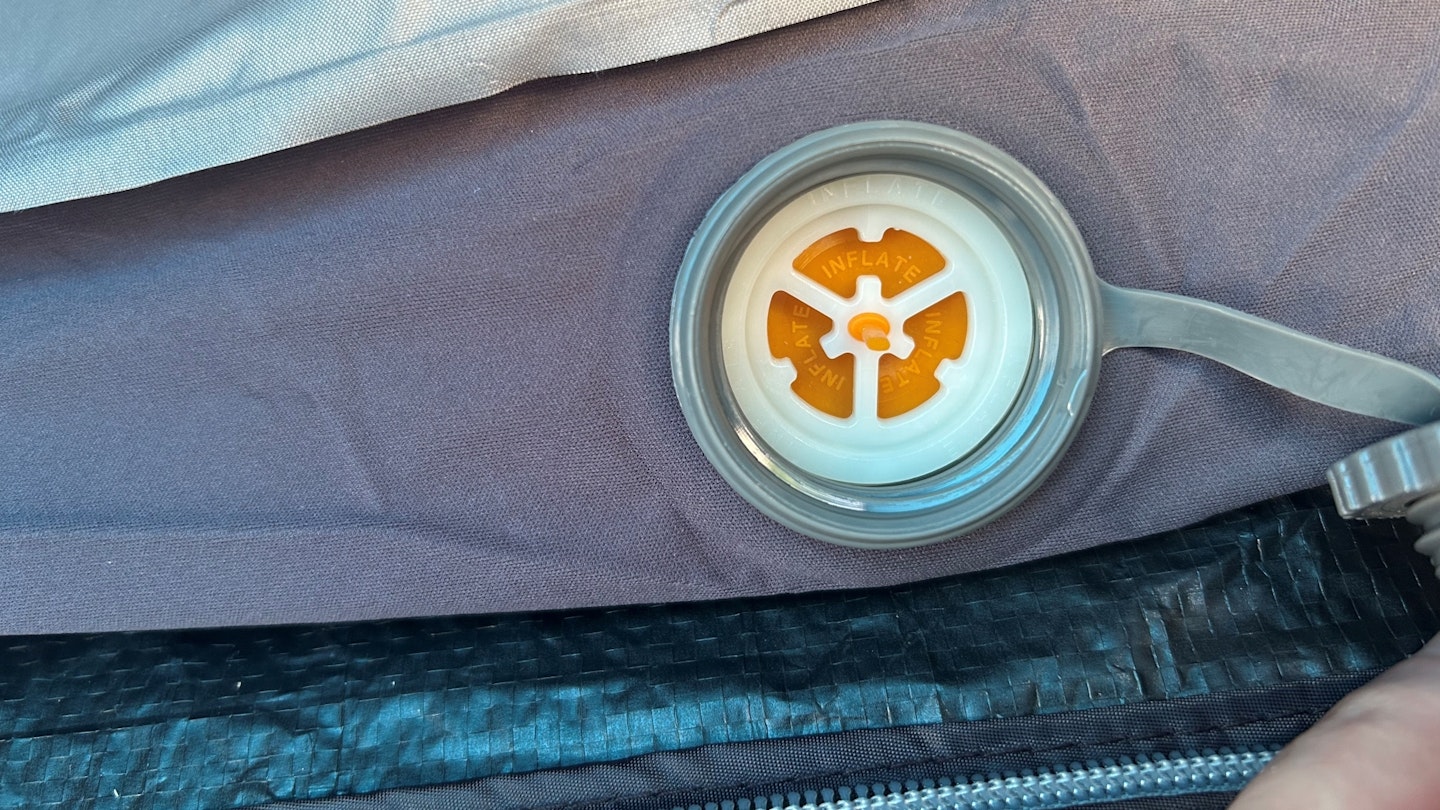
This takes quite a bit of puff – a dizzying couple of minutes. I found that the size of the valve was also quite a stretch to get my lips around. It seems a shame Berghaus hasn’t provided a pump sack of any description to achieve this, a feature I was very impressed with in the Coleman Supercomfort equivalent.
When done with the mat, I turned the toggle to the deflate setting, which reverses its directionality and stops air from entering while simultaneously allowing it to escape. It’s a bit of a novelty holding a hand in front of the valve on deflate setting initially and feeling the pressurised cold air escaping, though it admittedly won’t deflate much on its own.
To pack it out, you’ll have to roll it up to push the air out. I found that I had to do this a couple of times, firstly to force the majority of the air out and then again to get a nice tight roll, which also expelled any lingering air.
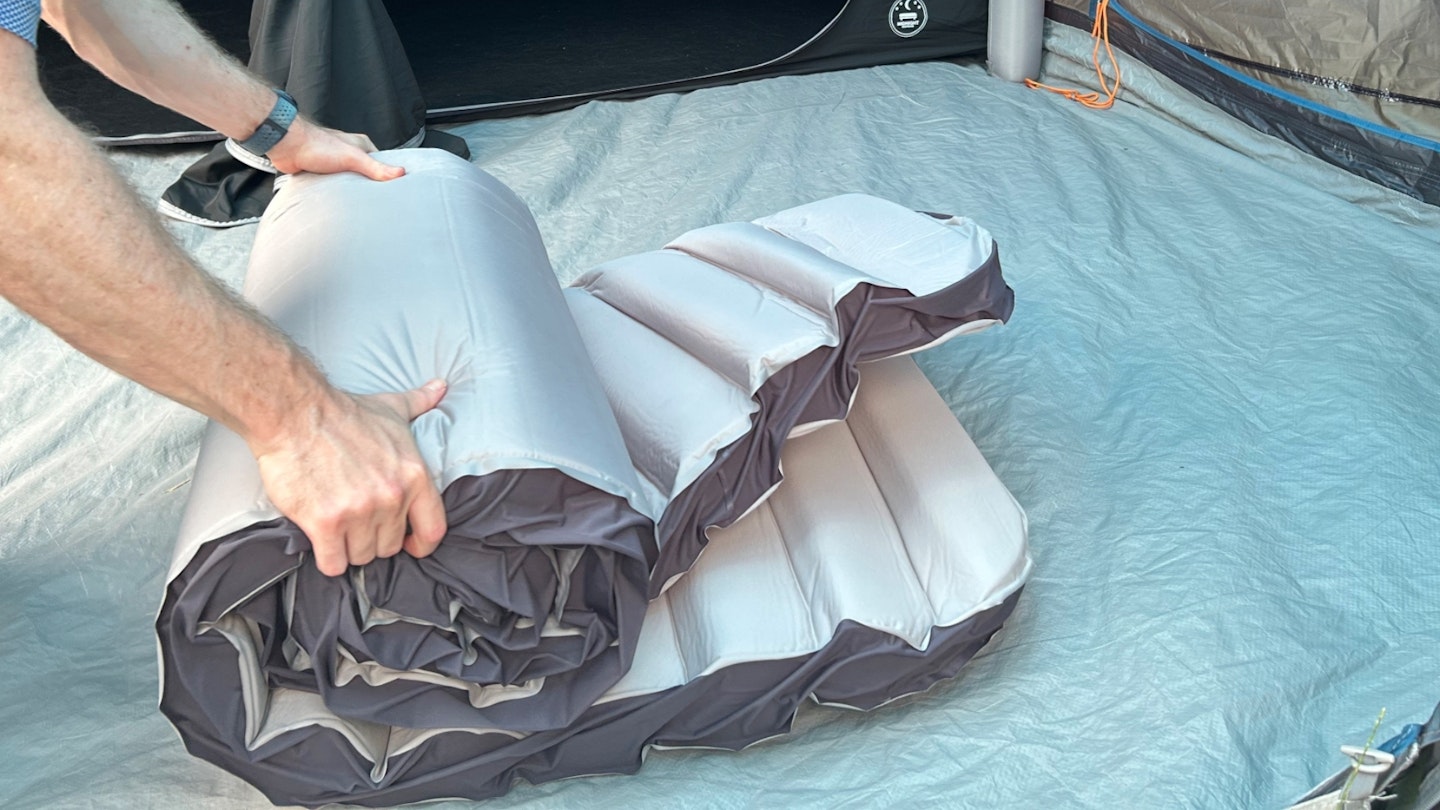
Warmth and R-Value
A sleeping mat's R-value is a measure of how much thermal resistance it provides. In other words, how well it will insulate you from the cold ground beneath your tent. The higher the number, the more resistance it provides. Pads with higher R-values are better suited to more extreme environments.
The Berghaus Air Double has a very high R-value of 6.9, which pretty much means you could use it anywhere from a garden campout to Everest basecamp. Basically, when fully inflated, its 10cm of foam and air provides an excellent barrier against the cold. The good news is, unlike a winter sleeping bag, it’s also fine to use in the height of summer.
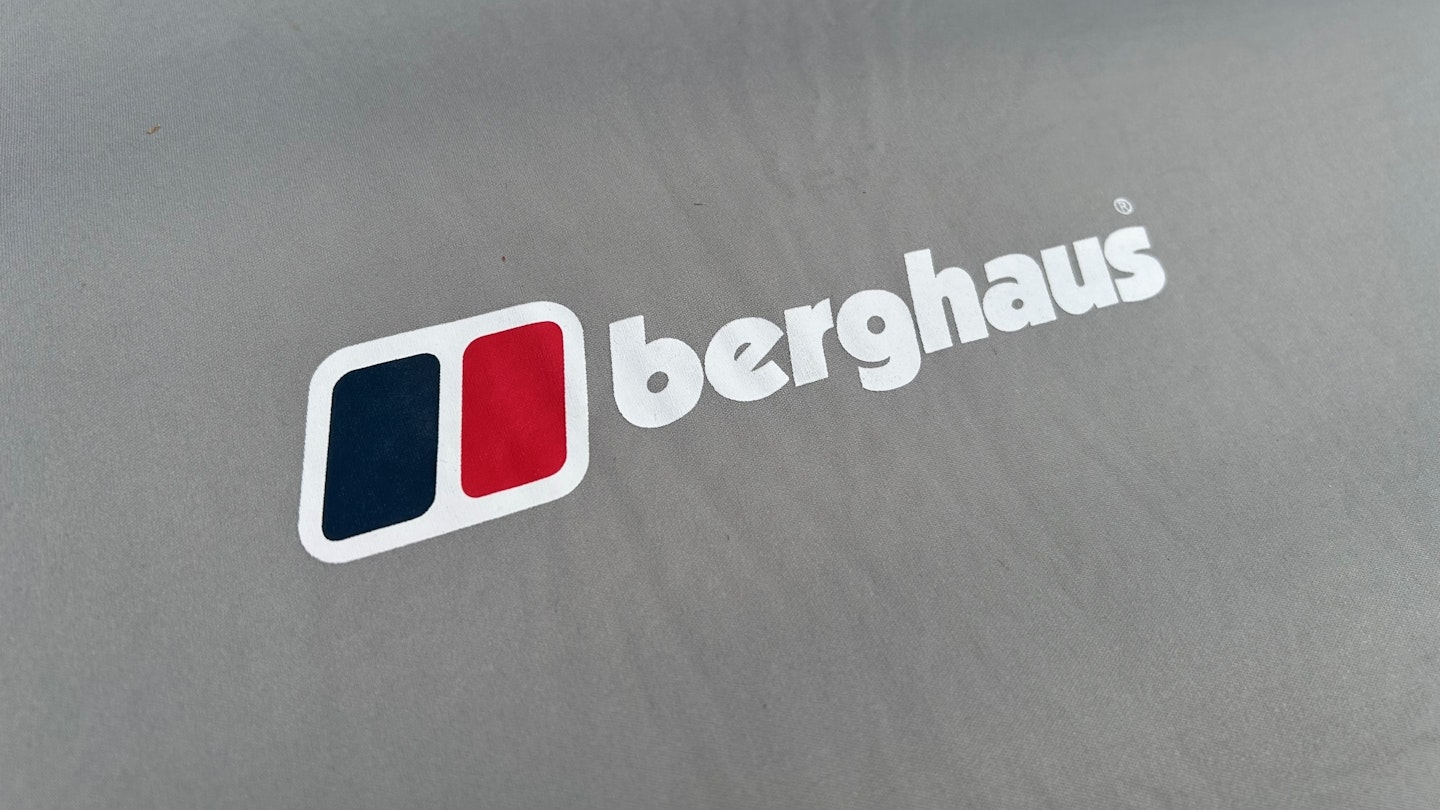
My test period took place during what was a remarkably warm June in the UK, the second hottest since records began. So, unsurprisingly, I was never cold while using the Air Mat. I don’t doubt its ability to insulate effectively during winter.
The test brands use to determine the R-value is a scientifically rigorous one. Without boring you with too much detail here, it involves hot and cold pads being placed between the mat to determine how much energy the hot pad requires to maintain its temperature. As already mentioned, a recorded value of 6.9 is very good indeed.
Weight and packed size
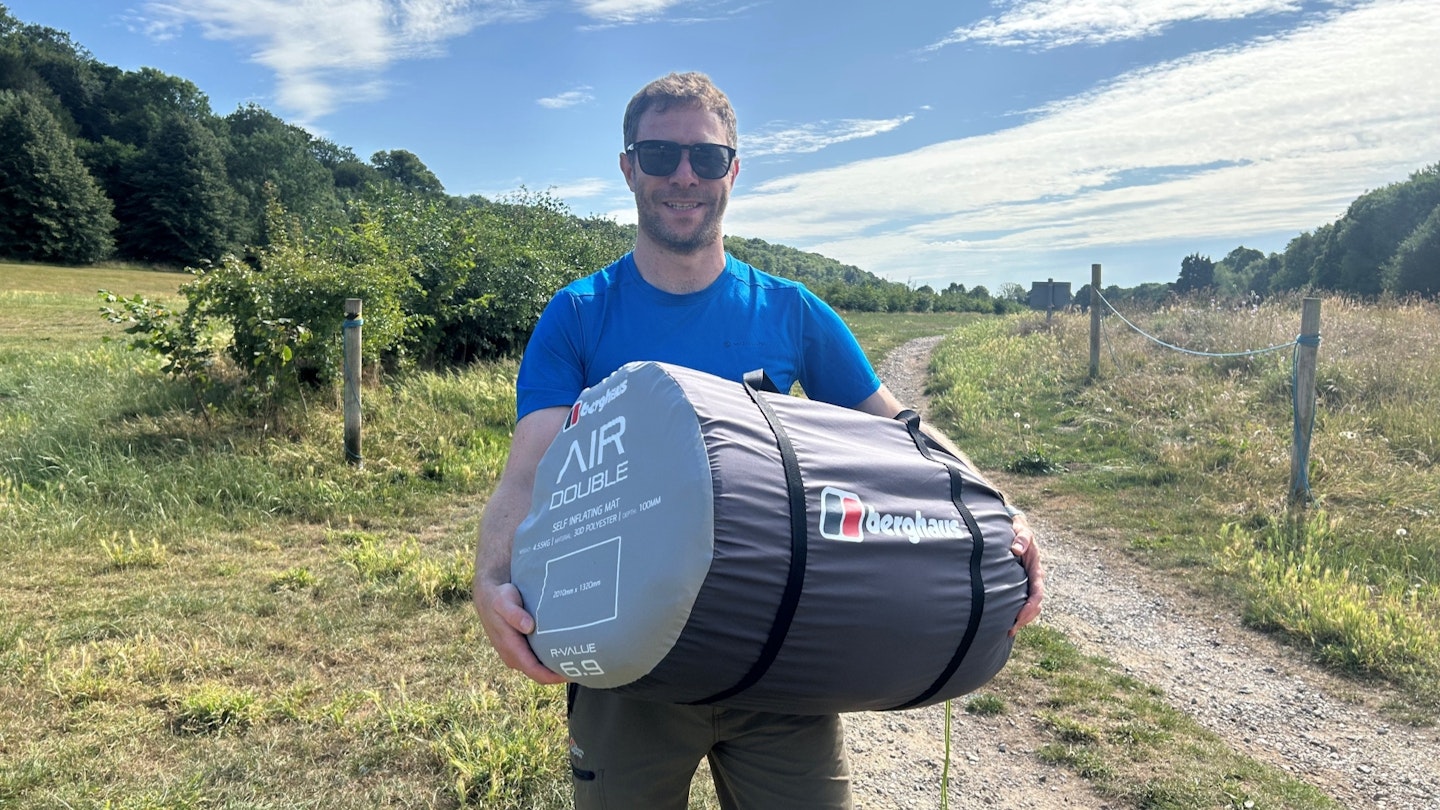
Weighing in at 4.59kg, it’s a pad for car camping trips and valley basecamps, rather than for hauling up high. However, the Air Double mattress is hardly heavy for a sleeping platform of this size and it compared favourably to the competition. It’s just under a kilogram less than the similarly sized Quechua Self-Inflating Camping Mattress Ultim Comfort Double (Decathlon love snappy names, don’t they!).
When packed down, it rolls into a neat 68x38x35cm unit, which is pretty small considering what we’re dealing with here. I found rolling it up was easy and Berghaus has thrown in a couple of elasticated loops for capturing the tightly rolled mat.
The carry bag is a fairly generic sack with a top drawcord closure and twin carry handles. It’s more than large enough to receive its cargo; in fact, the ease with which the Air Mat packs away is a real strength.
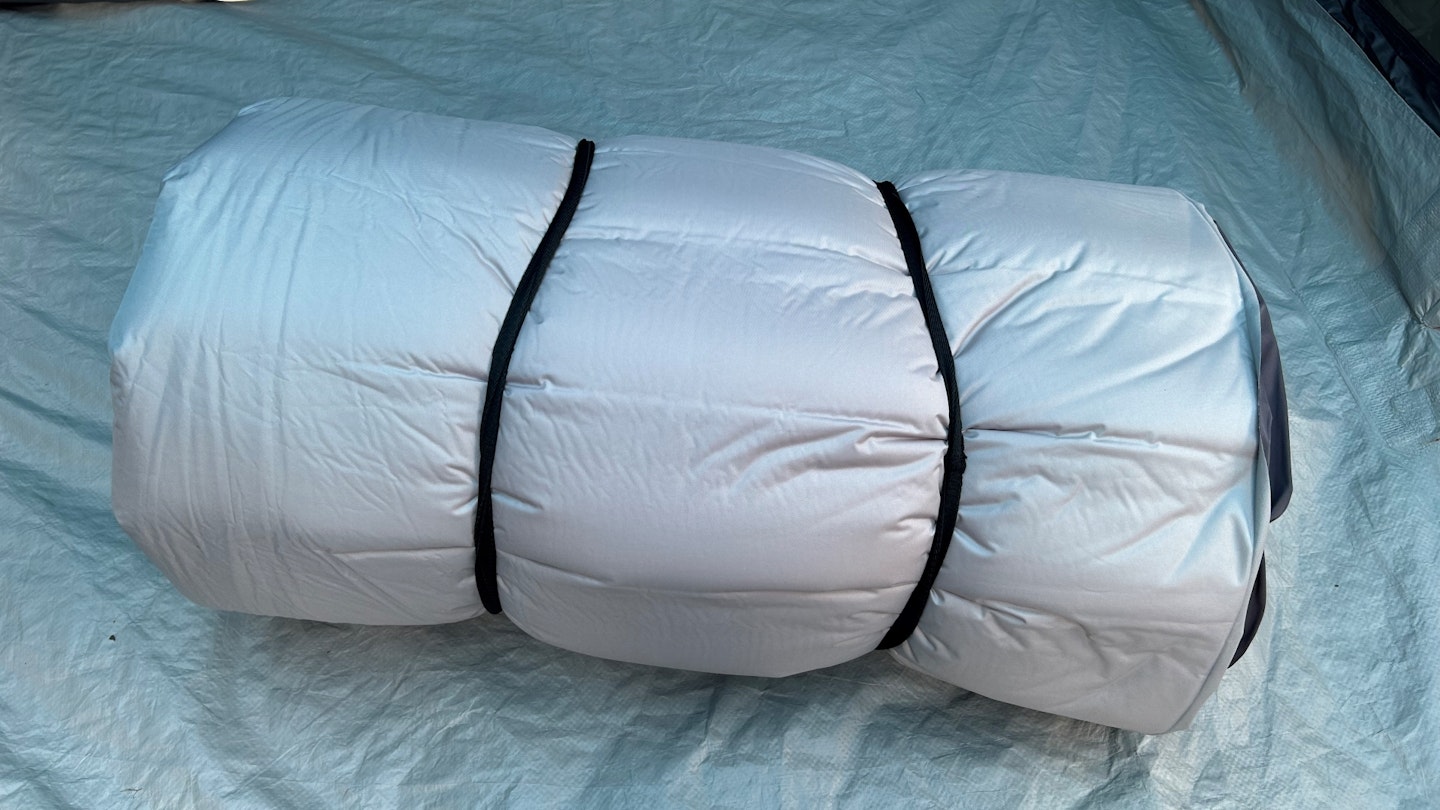
As is the case with sleeping bags, storing a sleeping pad squashed into its stuff sack like sardines in a tin is a bad idea for its long-term durability. Instead, Berghaus recommends storing it unrolled with its valve open to preserve its overall shape.
Obviously, it’s quite a large object to store in such a way, although if you’ve got storage space beneath a double bed, this is the ideal option.
Verdict
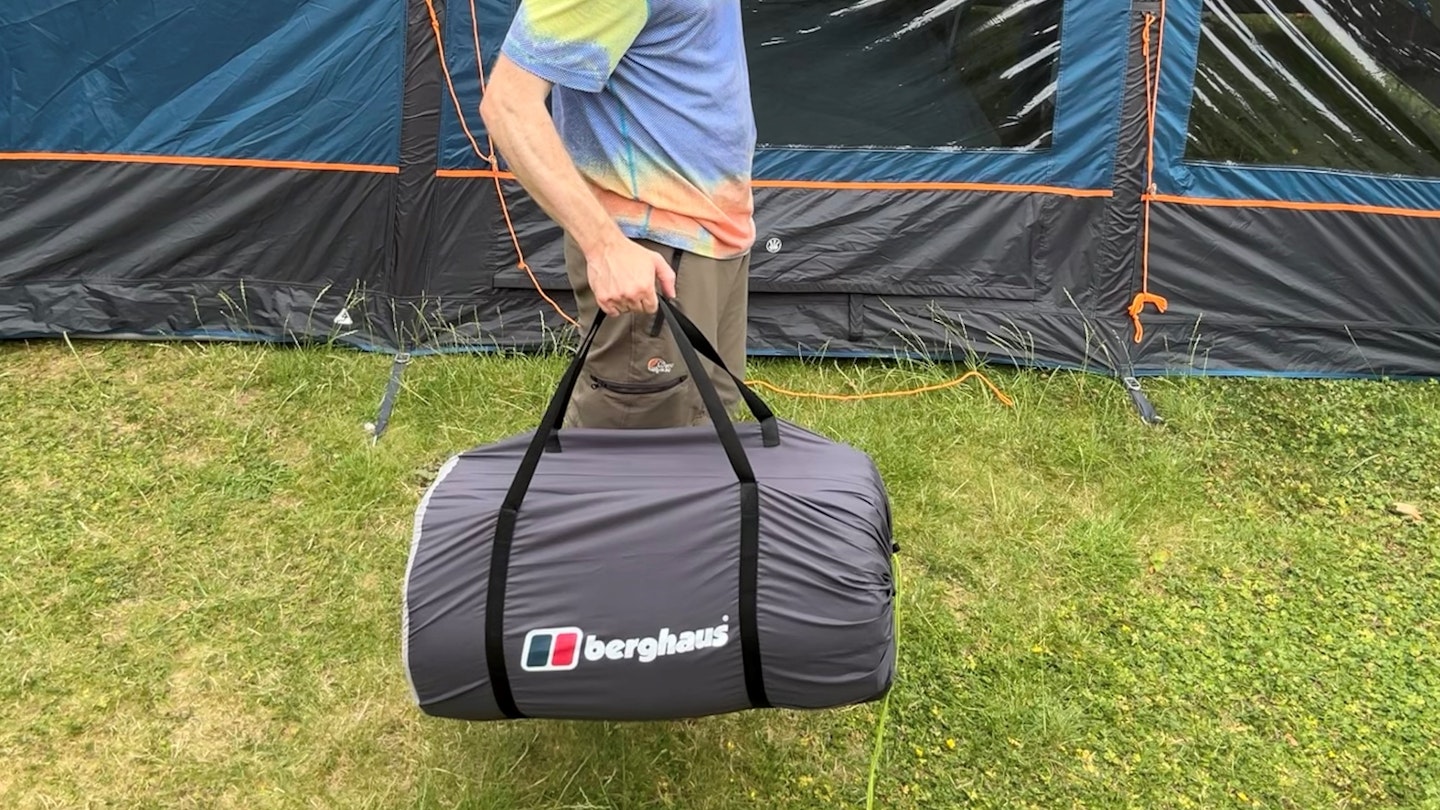
The Berghaus Air Double Self-Inflating Mat is a very good sleeping solution for camping families and festival goers. With an R-value of 6.9, you can pretty much take it anywhere, while it makes for a comfortable, supportive and near-silent slumber.
Its self-inflating qualities do most of the work, though it still requires a bit of puff to achieve the desired firmness – perhaps Berghaus could have thrown in a pump sack. This minor gripe aside, it’s a great product.
Shop this product
About the author

As a qualified Mountain Leader, avid wild camper and a family man, Alex Foxfield enjoys camping in all its forms. An expert on all things outdoor gear, he’s been testing and reviewing backpacking can car camping kit for many years.



